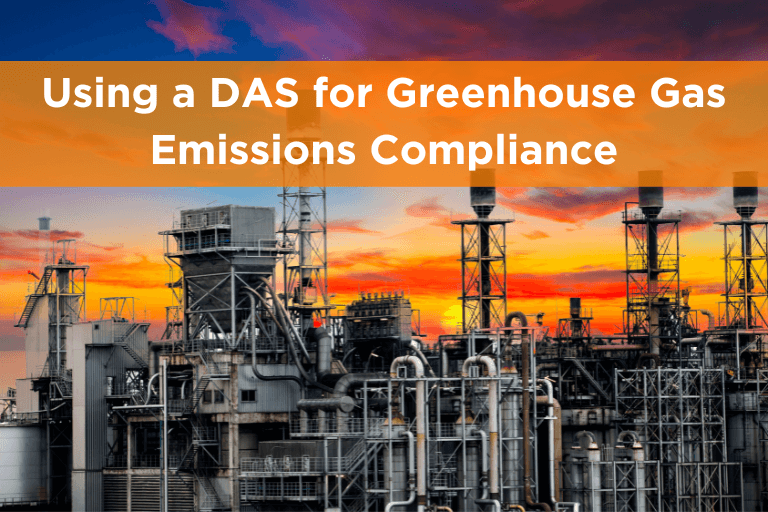What Are Greenhouse Gases (GHG)?
Chemical compounds absorb infrared radiation from the sun and trap heat in the earth’s atmosphere creating a “greenhouse” effect. Greenhouses Gases (GHG) in the environment have increased significantly since industrialization. The Environmental Protection Agency’s (EPA) GHG emissions data finds that: “Since 1970, CO2 emissions have increased by about 90%, with emissions from fossil fuel combustion and industrial processes contributing about 78% of the total greenhouse gas emissions increase from 1970 to 2011. Agriculture, deforestation, and other land-use changes have been the second-largest contributors. Emissions of non-CO2 greenhouse gases have also increased significantly since 1900.”
What Greenhouse Gases (GHG) are Regulated by the EPA?
In 2007, the Supreme Court ruled that GHGs were covered by the Clean Air Act and could be regulated if determined to be a danger to human health. The Final Rule for Mandatory Reporting of Greenhouse Gases was published in 2009.
Currently, the EPA stipulates that petrochemical production facilities must report the following gases:
- Carbon dioxide (CO2) process emissions from each petrochemical unit. Process emissions include CO2 generated by reaction in the process, and CO2, methane (CH4), and nitrous oxide (N2O) are generated by the combustion of process off-gas in stationary combustion units and flares.
- CO2, CH4, and N2O emissions from burning supplemental fuel in stationary combustion units that also burn process off-gas.
- CO2 captured and reported under 40 CFR part 98, subpart PP (Suppliers of Carbon Dioxide) by following the requirements under subpart PP.
In addition, each facility must report GHG emissions for any other source categories for which calculation methods are provided in other subparts of the rule.
Data Acquisition Systems and Petrochemical Emissions
Data Acquisition Systems (DAS) like ESC Spectrum’s StackVision and Prism are increasingly becoming necessary for petrochemical facilities to meet compliance as rules and regulations become more stringent. In December 2015, the EPA issued a final rule to control toxic air emissions from petroleum refineries – it was implemented in 2018. Petroleum refineries must comply with air emissions monitoring regulations, including the 40 CFR Part 63 (MACT CC) requirements via the Refinery Sector Rule (RSR).
Before this ruling, few refineries used a DAS. However, when reporting on flares became a priority, many sites realized they needed a tool other than spreadsheets due to the complexity of the requirements. After using a DAS for flares, many sites added their Fluid Catalytic Cracking Units (FCCUs), heaters, and boilers. Read more about how facilities can use a Data Acquisition System to comply with RSR regulations here.
Data Acquisition Systems (DAS) and Greenhouse Gas (GHG) Emissions
Many facilities using Data Acquisition Systems for flares, FCCUs, heaters, and boilers also elected to add GHG emissions. Some sites have also opted to use GHG sources as a “testbed” for a DAS because they are easier to track and report on and can be a good indicator of how well the system will work overall; the test can provide a facility with a good learning environment before an overall facility implementation.
Top 6 Reasons to Use a Data Acquisition System for Greenhouse Gas (GHG) Emissions Regulatory Compliance
- Automation: The more automated the system, the better. Automation reduces workload and allows users to focus on more critical tasks.
- Increased Efficiency: Spreadsheets are slow for large quantities of data, easily corrupted, and a poor solution for long-term data storage. Data Acquisition Systems provide fast, efficient data storage and accessibility.
- Transparency: A DAS provides visibility into the calculations used without tracing through DCS logic or chasing PI tags.
- Change Tracking: Users can track changes in data anytime gas cylinders or calculations are changed.
- Standardized Reporting: Users employ a set of standard reports that can be viewed across multiple sites and accessed by others with proper security access.
- Realtime Data: Users can view Greenhouse Gas Emission averages and totals based on the most current data anytime during the year, not just when reports are due.
Using ESC Spectrum’s DAS for Greenhouse Gas Emissions Compliance
StackVision and Prism are the leading Continuous Emissions Monitoring (CEM) Data Acquisition Systems for refineries to meet RSR requirements efficiently. Both work seamlessly with the 8864 Data Controller to collect, monitor, QA, and report on emissions data from CEMS accurately and reliably. StackVision and Prism are backed by 24/7 best-in-class customer support from a dedicated team of experts, services, and online and in-person training. They are in continuous development to keep pace with industry changes. Contact us for a demo today.


